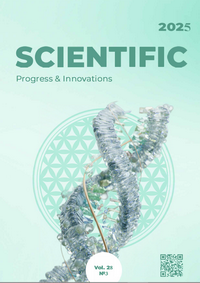Effectiveness of two-phase growing of piggles after liquid feeding in the feeding period
DOI:
https://doi.org/10.31210/spi2025.28.03.21Keywords:
piglet, rearing, feed conversion, survival, gains, cost, income, profitabilityAbstract
The aim of this study was to study the productive performance of piglets during rearing under single-phase and two-phase systems with changing feeding types, as well as to assess the economic efficiency of such systems. It was established that in the first rearing phase, an inverse relationship was observed between the duration of the period and the magnitude of relative gains, whereas in the second phase, relative gains increased with longer duration. At the same time, the overall impact of these changes on the total relative gains for the entire rearing period was insignificant and ranged from 0.2–1.6 %. It has been shown that the average daily gains for the entire rearing period largely depended on animal relocation and did not differ significantly among the control groups. Due to the differences in piglet mass at the beginning of the first and second phases, under dry feeding, the average daily gains decreased with increasing duration, whereas under liquid feeding, they increased with shorter duration. It was found that in the group of animals with single-phase rearing, without transportation or changes in the feeding method, the highest average live weight per head at the end of rearing was obtained – 29,1 kg, the highest absolute gain of one head for the entire rearing period – 22,85 kg, the highest survival rate of piglets – 98,93 % and the highest average daily gain – 466 g. These indicators were higher compared to animals that were transported to another site during the growing-up period, with a change in feeding method from dry to liquid. At the same time, in this group of piglets the average daily feed consumption did not exceed that of the others, and the feed conversion and feed cost per 1 kg of gain were the lowest compared to the groups with two-phase growing-up. Despite nearly identical rearing costs per piglet, the cost after finishing was only 0,3–0,6 % higher. However, due to the higher live weight after finishing, the selling price of one head was 1.4–2,1 % higher compared to the groups of animals with two-phase rearing. This resulted in a 3,4–6,7 % greater profitability of these animals than animals raised under the two-phase system. In turn, this contributed to an improvement in the profitability of raising animals with this feeding method by 1,05–2,43 %. At the same time, animals of the third and fourth groups, where the share of time using liquid feeding was 29 and 43 % of the entire growing period, respectively, demonstrated increased efficiency in producing a unit of live weight gain. This is reflected in lower operating costs and higher profitability per 1 kg of live weight.
Downloads
Published
How to Cite
Issue
Section
License
Copyright (c) 2025 Scientific Progress & Innovations

This work is licensed under a Creative Commons Attribution 4.0 International License.

 Creative Commons Attribution 4.0 International Licens
Creative Commons Attribution 4.0 International Licens